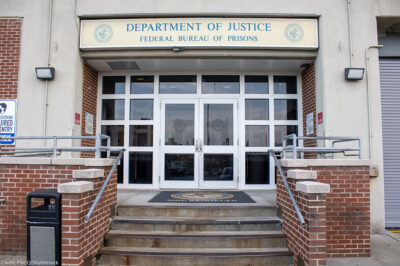
Despite the never-ending polar vortex, spring is in the air. From cleaning out your fridge to busting out your warm weather wardrobe for the first time in six months, spring is a time for change for the better.
Yes, spring fever is here, and it looks like even the federal Bureau of Prisons is feeling the spirit of the season.
As recently as last summer, the federal prison system was close to 40% over capacity. But, according to data released earlier this month, BOP facilities are now only filled at 132% capacity. This is a big deal.
Yes, too many people are still behind bars for too long and often unnecessarily, and yes, that means facilities are still filled beyond their capacity. But for federal jails and prisons to reverse their trend and actually depopulate their prisons—following a trend the states have been leading for years—is a major step in the right direction.
During a recent U.S. Sentencing Commission hearing, BOP Director Charles Samuels attributed the drop in prison population to new Department of Justice policies. In response to a question from one of the Commissioners, Samuels said “[a] lot of it has to do with the charging practices and what is decided as far as the U.S. attorney’s office and what they are going to look at. That has – in our opinion – been a large part of what is happening.”
Samuels was referring to a speech by Attorney General Eric Holder last summer, which announced game-changing reforms to the way the Department of Justice prosecutes and addresses drug crimes. Holder took a big step toward reducing the unsustainably bloated prison population by changing the Justice Department’s charging policies so that certain low-level, non-violent drug offenders who have no ties to gangs or similar organizations will no longer receive mandatory minimum sentences, and his changes seem to have paid off.
While the attorney general has taken some initial steps to address the mass incarceration crisis in this country, he can’t do this alone. We need Congress to continue the work that the Administration has started by passing legislation like the Smarter Sentencing Act.
The Smarter Sentencing Act was voted out of committee in the Senate earlier this year and has some serious bipartisan support. This bipartisan, comprehensive legislation would reduce the length of some drug mandatory minimum sentences, allow judges to use more discretion to determine sentences for low level drug offenses, and apply the law that reduced the crack-powder cocaine sentencing disparity to those currently serving sentences for these offenses. The SSA could come up for a vote on the Senate floor soon as next month.
Attorney General Holder made a bold and historic move to reevaluate who the Department of Justice was using its resources to lock up in prison, and any reduction in the bloated federal prison population is worth cheering. But a prison system that’s now “only” 32% over capacity is still unacceptable.
Now it’s time for Congress to do some soul searching about its role in the mass incarceration crisis in this country and acknowledge that its approach to sentencing with mandatory minimums has been a failure.
The federal prison system has already managed to slim down in time for spring with fairly limited reform. Imagine how much better it will look this time next year if Congress passes the Smarter Sentencing Act.
Learn more about mandatory minimum sentences and other civil liberties issues: Sign up for breaking news alerts, follow us on Twitter, and like us on Facebook.


